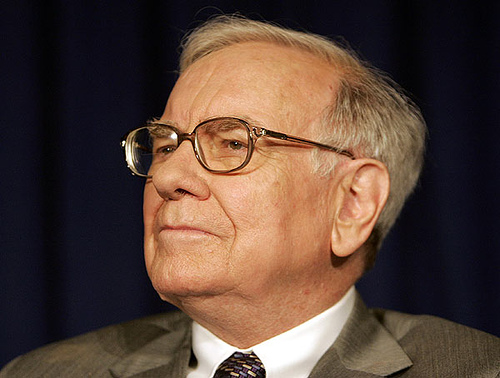 Author: Mosaic Financial Partners
Author: Mosaic Financial Partners
Covestor model: Strategic Asset Allocation
Disclosures: None
A range of concerns contributed to global financial market volatility during the 2nd quarter. These concerns include the Eurozone debt crisis, the end of the Federal Reserve’s bond purchase program (QE 2), the growth in the U.S. debt, and uncertainties relating to the resolution of the U.S. debt ceiling expiration.
Global economic data was also disappointing, reflecting continued weakness in the overall global economy. The range of natural disasters both in the U.S. and abroad added to the challenges facing the global economy. Should these issues recede, the potential for second half improvement may exist. Still, the range of significant problems facing the global economy is considerable and any optimism must be tempered with a distinct note of caution.
U.S. Economy
During the 2nd quarter, weak economic data plagued the markets. Manufacturing activity dipped into negative territory, jobless claims remain stubbornly high, and housing continued to scrape along the bottom.
Despite weakness in a number of economic areas, the Index of Leading Economic Indicators has rebounded with a positive gain. Meanwhile, core inflation remains relatively low. As detailed below, there has been some improvement in a number of the economy’s underlying fundamentals since June 2010.
Employment—the June labor report showed the U.S. unemployment rate increased slightly to 9.2%. The private sector added 57,000 jobs last month, while government employment declined by 39,000. Unemployment rates across the country vary significantly with high unemployment states having rates in the 10-12% range, while states like Nebraska and the Dakotas have unemployment rates in the 3-5% range.
Given the employment picture, not surprisingly, wage growth has remained virtually flat. For the near term, the weak employment market will continue to limit any wage-driven inflation risk.
World Economy
As illustrated by the Purchasing Managers Index (PMI), signs of slowing economic growth have not been exclusive to the U.S. The PMI is an indicator that monitors economic activity in the manufacturing sector. A measure above 50 reflects economic expansion, and a reading under 50, contraction.
The global manufacturing PMI index declined for a fifth consecutive month and fell to 52.3 in June. This slowdown is broadly observed across many of the major economies. Although the index is above the 50 “break-even” mark, it is now lower than the low point reported following last summer’s slowdown.
As for the Eurozone, economic growth often parallels trends in the U.S. economy. A combination of slower U.S. growth, fiscal austerity measures in the EU countries, and continuing concerns about sovereign debt have all dampened economic growth in the EU.
More recently, the Eurozone has not been among the largest contributors to global growth. The three largest drivers of global growth have been U.S. consumer demand, Japanese manufacturing output, and Chinese investment in property and infrastructure. The simultaneous slowdown in all three areas has clearly affected global growth.
Going forward, Japan is likely to be weighed down by capacity constraints, electrical generation problems, and the demands of reconstruction (though it must be noted that these same elements will create some opportunities for growth). In the case of China, its economy is moderating and measures have been put in place to slow lending and property speculation.
Quantitative Easing (QE 2)
In August of 2010, after the U.S. economy slowed unexpectedly, the central bank announced plans to purchase another $600 billion in Treasury securities in a second round of quantitative easing (QE2). The Fed’s goal was to put more money into the financial system and keep the economy growing. The last QE2 purchase occurred on June 30 (though the Fed will maintain its existing policy of reinvesting principal payments from its securities holdings). While initially benefiting Treasury securities, the program has done more to bolster commodity and stock prices since the program’s initial announcement and implementation.
QE 2 was a centerpiece of the U.S. central bank’s monetary policy and showed that the Fed can conduct a monetary stabilization policy even when rates are near zero.
Summary
As we close the first half of 2011, slow economic growth, global debt concerns, and the very slow recovery of housing and jobs are still the themes for the year. In light of these concerns, we believe it is important to stay focused on long term spending, savings and investing goals and to remember in particular that investing should not be a short term activity.
At Mosaic Financial Partners, we continue to focus on maintaining an appropriate strategic asset allocation for portfolios —the right mix of cash, bonds, stocks, real estate and alternative investments, given our time horizon, risk tolerances and financial objectives. These decisions don’t shift greatly with the constant volatility in the market —rather, they provide an anchor to help us keep our eye on our longer-term objectives.
While real problems abound, we remain cautiously optimistic about the economic recovery. While no one can reliably predict the precise path events will follow, ultimately, there will be a resolution on the debt ceiling issue. Sovereign debt overloads will be addressed in some fashion. And, while progress will inevitably be slow, improvement in jobs and housing will also emerge.
Sources:
BLS report. http://www.bls.gov/news.release/empsit.nr0.htm
“Global manufacturing PMI at 52.3 in June” Reuters, 7/1/11 http://in.reuters.com/article/2011/07/01/pmi-manufacturing-global-idINL3E7I11QZ20110701



